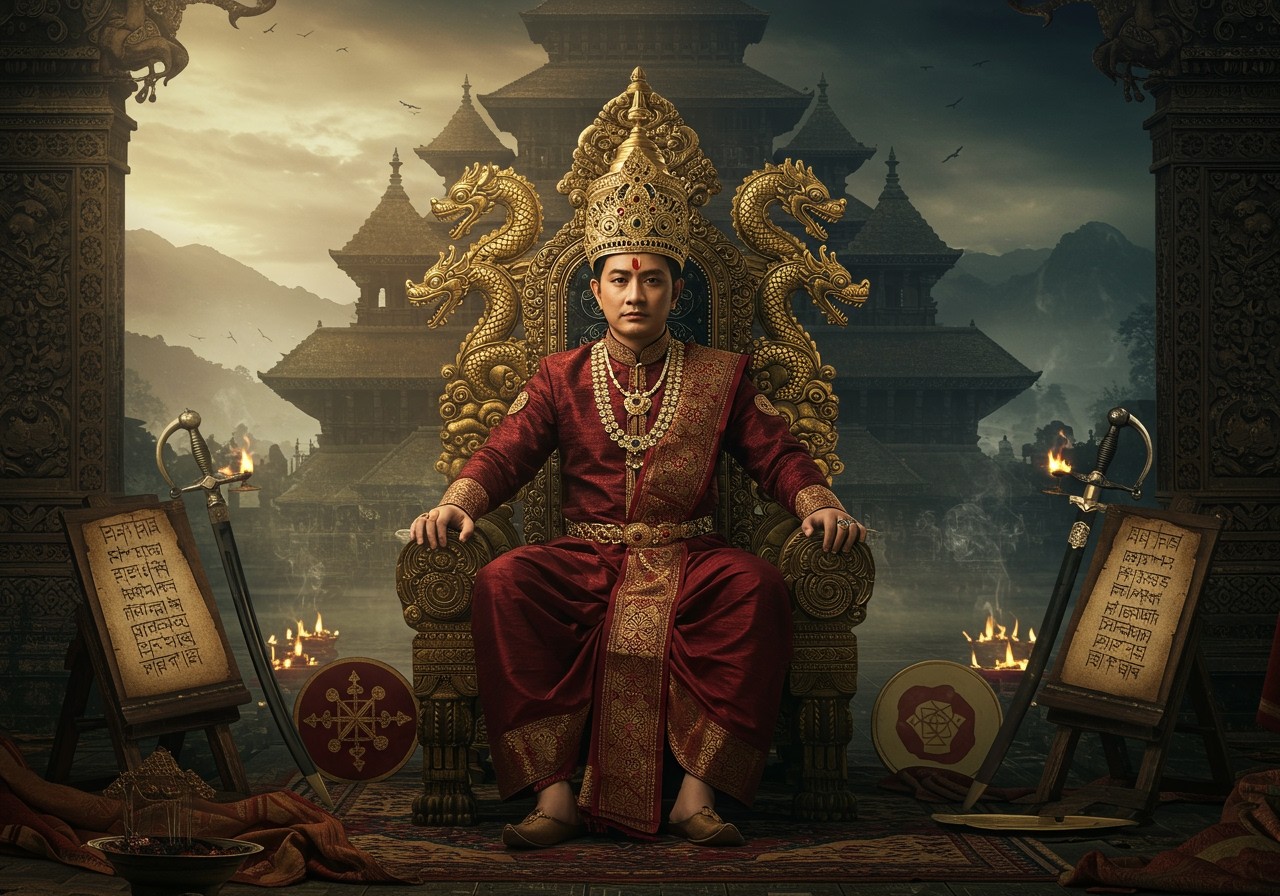
Susenghphaa, also known as Swargadeo Pratap Singha, remains a towering figure in the annals of Assamese history. This powerful ruler of the Ahom kingdom, whose reign spanned 1603 to 1641 AD, left an indelible mark on the cultural and political landscape of the region. His story, a blend of wisdom, strategic brilliance, and deep respect for tradition, continues to resonate with us today.
From Langi Gohain to Burha Raja: The Rise of Susenghphaa
Born the son of King Sukhaamphaa, Susenghphaa’s journey to kingship is a testament to his inherent leadership qualities. Known as Langi Gohain in his earlier years, he ascended the throne at the age of 58. Upon his coronation, Tai priests bestowed upon him the name Susenghphaa, a title signifying his elevated status and the weighty responsibilities he now bore. He later earned the affectionate moniker “Burha Raja,” meaning Old King, a term reflecting the wisdom and experience he brought to his rule.
A Reign of Expansion and Resilience
Susenghphaa’s reign saw the Ahom kingdom expand westward, a testament to his strategic thinking and military prowess. This period wasn’t without its challenges. The nascent Ahom-Mughal conflicts began during his time, testing the kingdom’s strength and resilience. However, Susenghphaa skillfully navigated these turbulent times, forging crucial alliances with the rulers of Koch Hajo to resist Mughal expansion. This act of unity solidified his position as a shrewd diplomat and a protector of his people.
Administrative Reforms and Lasting Structures
Beyond military strategy, Susenghphaa proved to be a visionary administrator. He reorganized the kingdom with an expanded Paik system, a traditional system of labor and military service, further strengthened by the economic reforms of his trusted advisor, Momai Tamuli Borbarua. To efficiently manage the newly acquired territories, he created new administrative roles, notably the Borbarua and the Borphukan. This administrative framework, a testament to his foresight, remarkably remained in place until the end of the Ahom kingdom in 1826.
A Cultural Renaissance: Durga Puja and Beyond
Susenghphaa’s influence extended beyond political and administrative realms, deeply impacting the cultural fabric of Assam. Historian Late Benudhar Sarma attributes the tradition of Durga Puja celebrations with earthen idols in Assam to Susenghphaa’s reign. This practice, deeply ingrained in Assamese culture today, showcases his respect for tradition and his contribution to the rich tapestry of Assamese heritage.
Discover beautiful clay items for your puja at Poojn.in.
Poojn.in: Honouring Tradition, Embracing Convenience
For those seeking to connect with this rich history and continue these sacred traditions, Poojn.in offers a wide range of authentic puja samagri. As India’s leading online store for cultural and religious goods, we understand the importance of these rituals.
A Legacy that Endures
Susenghphaa’s story is not merely a historical account; it is a vibrant narrative of leadership, resilience, and cultural preservation. His strategic alliances, administrative reforms, and patronage of the arts continue to shape Assamese identity. As we explore his life and contributions, we are reminded of the enduring power of wisdom, courage, and a deep connection to one’s heritage.
Do you still have some questions? Let’s explore some common queries about Susenghphaa:
Delving Deeper: Understanding Susenghphaa
What were the origins of Susenghphaa? Susenghphaa, whose birth name was Langi Gohain, hailed from the royal lineage of the Ahom kingdom in present-day Assam, India. His story is intertwined with the rich tapestry of the Ahom dynasty, a powerful force in the region for centuries. At the age of 58, he was crowned king and given the name Susenghphaa by Tai priests, marking the beginning of his influential reign.
What makes Susenghphaa such a significant figure? Susenghphaa, also known as Pratap Singha, stands as a pivotal figure in Assamese history. His reign, from 1603 to 1641 AD, was marked by significant expansion of the Ahom kingdom, skillful navigation of the early Ahom-Mughal conflicts, and crucial administrative reforms that shaped the kingdom for generations.
How did Susenghphaa contribute to the development of the Ahom kingdom? Susenghphaa’s contributions to the Ahom kingdom are multifaceted. He not only expanded the kingdom’s territory but also implemented crucial administrative changes, like the refined Paik system and the creation of new offices such as Borbarua and Borphukan, that ensured its stability. These reforms streamlined governance and strengthened the kingdom’s ability to manage its growing influence.
Dive deeper into the history of Hinduism and its fascinating origins on our blog.
What are some of Susenghphaa’s most notable achievements? Among his many achievements, Susenghphaa’s westward expansion of the kingdom, his successful alliances with Koch Hajo against Mughal expansion, and his long-lasting administrative reforms stand out. He also left a lasting cultural legacy, with the tradition of Durga Puja with earthen idols attributed to his reign.
How did Susenghphaa’s rule influence the region’s cultural practices? Susenghphaa’s reign marked a period of cultural flourishing. Notably, the tradition of Durga Puja with earthen idols is believed to have begun during his time, becoming a cornerstone of Assamese cultural heritage. This illustrates his influence on the region’s religious and artistic expressions.
Enhance your puja experience with authentic Guggal from Poojn.in.
What were some of the obstacles Susenghphaa encountered during his reign? Susenghphaa faced considerable challenges, including the emerging Ahom-Mughal conflicts, which threatened the kingdom’s stability. His ability to navigate these difficulties through strategic alliances and administrative reforms demonstrates his leadership and resilience.
Why is Susenghphaa’s story still relevant in the 21st century? Susenghphaa’s story continues to inspire because it embodies the spirit of leadership, resilience, and cultural preservation. His vision for a strong and culturally rich kingdom resonates even today, serving as a reminder of the enduring power of wisdom and strategic thinking. His legacy reminds us of the importance of upholding traditions while adapting to changing times.
Explore more insightful articles on Indian culture and history at Poojn.in.


